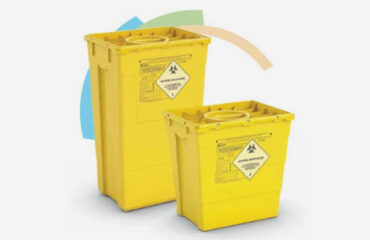10 Simple Techniques For Reclaim Waste
10 Simple Techniques For Reclaim Waste
Blog Article
9 Simple Techniques For Reclaim Waste
Table of ContentsThe Best Strategy To Use For Reclaim WasteThe 30-Second Trick For Reclaim WasteNot known Facts About Reclaim WasteAll about Reclaim WasteRumored Buzz on Reclaim Waste
Domestic sewer waste refers to the waste and items from a residential septic tank. The appropriate monitoring and disposal of domestic sewage waste call for fluid waste to be transferred to a sewage treatment plant where the proper methods and devices are applied to purify and dispose of waste.
Commercial waste often consists of potential risks, such as flammable products or a blend of fluid and strong waste products, and requires a more innovative and detailed disposal process. The disposal of industrial waste generally includes the purification of waste prior to transport to ensure safe and proper disposal. Industrial waste is produced from byproducts and overflow of commercial processes and manufacturing.
This sort of waste can not utilize the exact same sewage management transportation or procedures as septic or industrial liquids. The commercial waste monitoring procedure calls for the evaluation and testing of fluid waste before it undertakes the disposal procedure (liquid waste disposal melbourne). Drainage waste is the liquid waste that comes from drainage and excess stormwater in highly populated areas or cities
Overflow waste can trigger contamination and flooding otherwise taken care of correctly. Find out more regarding sewage system cleansing and waste monitoring. Guaranteeing proper waste management can protect against disasters and reduce ecological damage. Both individuals in domestic setups and professionals in industrial or production industries can gain from comprehending the processes and regulations of liquid waste monitoring.
Reclaim Waste - Truths
Contact PROS Providers today to learn more about our waste administration and disposal solutions and the correct means to take care of the fluid waste you produce.
(https://www.gaiaonline.com/profiles/reclaimwaste1/46907679/)This so-called 'wastewater' is not just a vital source but, after therapy, will be released to our land, rivers or the sea. Utilized water from bathrooms, showers, bathrooms, cooking area sinks, washings and industrial procedures is recognized as wastewater.

water made use of to cool down machinery or clean plant and equipment). Stormwater, a form of wastewater, is drainage that streams from agricultural and urban locations such as roof coverings, parks, gardens, roads, paths and seamless gutters into stormwater drains pipes, after rain. Stormwater flows neglected directly to neighborhood creeks or rivers, ultimately reaching the ocean.
The 7-Minute Rule for Reclaim Waste
In Queensland, the majority of wastewater is treated at sewer therapy plants. Wastewater is transported from domestic or commercial websites via a system of sewage systems and pump terminals, referred to as sewage reticulation, to a sewer treatment plant. Local governments develop, maintain and operate most sewer therapy plants. Operators are accredited under the Environmental Defense Act 1994 to release cured wastewater at an acceptable environmental requirement into rivers.
The Division of Natural Resources encourages city governments concerning managing, operating and preserving sewerage systems and therapy plants. In unsewered locations, city governments might require homeowners to install private or family sewer therapy systems to treat domestic wastewater from commodes, kitchen areas, restrooms and washings. The Division of Natural look here Resources authorizes making use of home systems when they are proven to be effective.
Many stormwater obtains no treatment. In some new neighborhoods, treatment of some stormwater to get rid of clutter, sand and crushed rock has actually begun using gross contaminant catches. Wastewater treatment takes place in 4 phases: Removes strong issue. Larger solids, such as plastics and other objects incorrectly released to drains, are removed when wastewater is gone through displays.
Wastewater then flows right into huge containers where solids work out and are removed as sludge. Oil and scum are skimmed from the surface area. Utilizes little living organisms referred to as micro-organisms to damage down and remove remaining dissolved wastes and fine particles. Micro-organisms and wastes are incorporated in the sludge. Gets rid of nitrogen and phosphorus nutrients that might cause algal flowers in our waterways and threaten marine life.
All about Reclaim Waste
Nutrient removal is not offered in all sewer treatment plants because it needs expensive specialist tools. It is becoming a lot more common in Queensland. Clear fluid effluent produced after therapy might still include disease-causing micro-organisms. If this effluent is released into rivers such as rivers or the sea, the micro-organisms will ultimately pass away out.

This generally means wastewater has to be treated or pollutants gotten rid of before it can be discharged to rivers. The majority of wastewater flows right into the sewerage system. Under the Act, city governments administer authorizations and licences for environmentally appropriate activities (Ages) involving wastewater launches that may have a local influence. The division provides approvals and licences to Ages involving wastewater launches that could have a local or statewide effect.
What Does Reclaim Waste Do?
Monitoring gives valid information about water high quality and can confirm that licence conditions are being met. The info obtained via monitoring offers the basis for making water quality choices.
Report this page